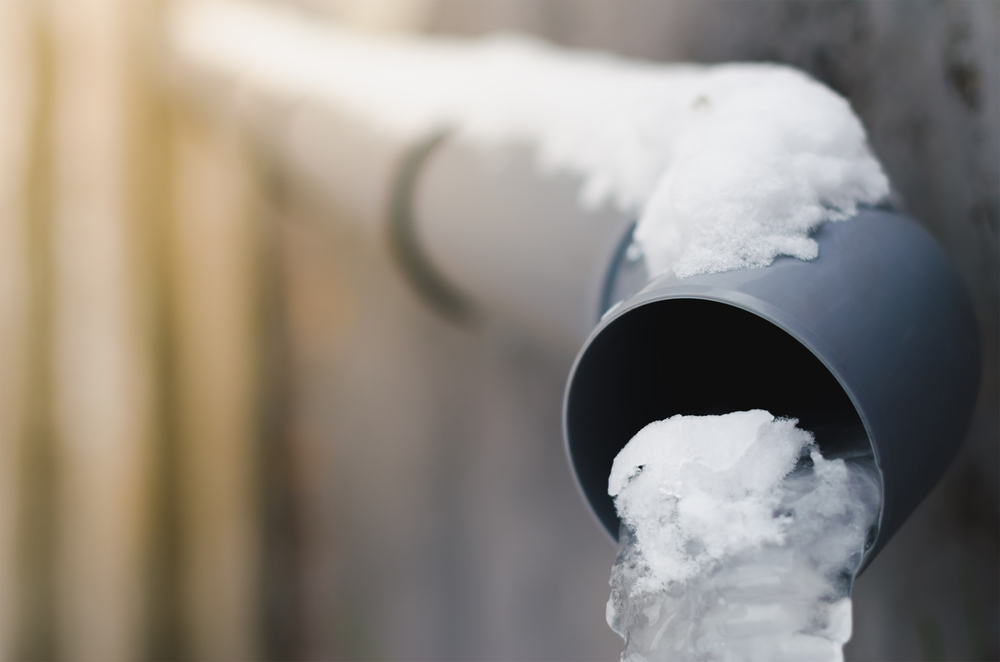We have unearthed this post pertaining to How to prepare your home plumbing for winter weather down the page on the net and thought it made good sense to share it with you on my blog.

Cold weather can wreak havoc on your plumbing, particularly by freezing pipes. Here's how to stop it from taking place and what to do if it does.
Intro
As temperature levels decrease, the risk of icy pipes increases, possibly causing expensive repairs and water damages. Comprehending just how to avoid frozen pipelines is essential for homeowners in chilly climates.
Recognizing Icy Pipes
What causes pipelines to ice up?
Pipes ice up when revealed to temperatures listed below 32 ° F (0 ° C) for expanded periods. As water inside the pipelines ices up, it expands, putting pressure on the pipe walls and possibly creating them to rupture.
Dangers and problems
Frozen pipes can lead to water system interruptions, residential or commercial property damages, and pricey fixings. Ruptured pipes can flooding homes and create substantial structural damages.
Indications of Frozen Pipeline
Identifying icy pipes early can stop them from rupturing.
How to determine frozen pipes
Look for reduced water circulation from faucets, uncommon smells or noises from pipelines, and noticeable frost on exposed pipelines.
Avoidance Tips
Insulating prone pipelines
Cover pipes in insulation sleeves or utilize warm tape to shield them from freezing temperatures. Focus on pipelines in unheated or external locations of the home.
Heating strategies
Maintain indoor rooms properly heated, especially areas with pipes. Open up closet doors to enable warm air to flow around pipelines under sinks.
Protecting Outside Plumbing
Yard hose pipes and outdoor taps
Separate and drain pipes yard tubes before winter season. Mount frost-proof faucets or cover outside faucets with shielded caps.
What to Do If Your Pipes Freeze
Immediate activities to take
If you think icy pipes, maintain faucets available to ease pressure as the ice thaws. Use a hairdryer or towels taken in hot water to thaw pipelines gradually.
Long-Term Solutions
Structural changes
Consider rerouting pipelines far from exterior wall surfaces or unheated locations. Add extra insulation to attic rooms, cellars, and crawl spaces.
Upgrading insulation
Purchase top quality insulation for pipelines, attic rooms, and wall surfaces. Proper insulation assists keep regular temperature levels and reduces the risk of frozen pipelines.
Conclusion
Avoiding frozen pipes requires proactive measures and fast responses. By recognizing the reasons, indications, and safety nets, home owners can safeguard their plumbing during winter.
6 Proven Ways to Prevent Frozen Pipes and Protect Your Home
Disconnect and Drain Garden Hoses
Before winter arrives, start by disconnecting your garden hoses and draining any remaining water. Close the shut-off valves that supply outdoor hose bibs and leave the outdoor faucet open to allow any residual water to drain. For extra protection, consider using faucet covers throughout the colder months. It’s also important to drain water from any sprinkler supply lines following the manufacturer’s directions.
Insulate Exposed Pipes
Insulating your pipes is an effective way to prevent freezing. Pipe insulation is readily available at home improvement stores and is relatively inexpensive. Pay close attention to pipes in unheated areas such as the attic, basement, crawl spaces, or garage. Apply foam insulation generously to create a buffer against the cold. You can also wrap your pipes in heat tape or thermostat-controlled heat cables for added warmth.
Seal Air Leaks
Inspect your home for any cracks or openings that could let in cold air. Seal any holes around the piping in interior or exterior walls, as well as the sill plates where your home rests on its foundation. Additionally, make sure to keep your garage door closed unless you’re entering or exiting. Leaving it open creates a significant air leak that can lead to frozen pipes.
Allow Warm Air Circulation
During cold snaps, it’s essential to allow warm air to circulate evenly throughout your home. Leave interior doors ajar to promote better airflow. Open kitchen and bathroom cabinets to help distribute heat consistently around the rooms. If you have small children or pets, be sure to remove any household chemicals or potentially harmful cleaners from open cabinets for safety.
Let Faucets Drip
A small trickle of water can make a big difference in preventing ice formation inside your pipes. When temperatures drop significantly, start a drip of water from all faucets served by exposed pipes. This continuous flow helps prevent the water from freezing. Additionally, running a few faucets slightly can relieve pressure inside the pipes, reducing the chances of a rupture if the water inside does freeze.
https://choateshvac.com/6-proven-ways-to-prevent-frozen-pipes-and-protect-your-home/

We were made aware of that write-up on Prevent Frozen Pipes through someone on a different web address. Sharing is caring. Helping others is fun. Many thanks for taking the time to read it.
Call Us Today